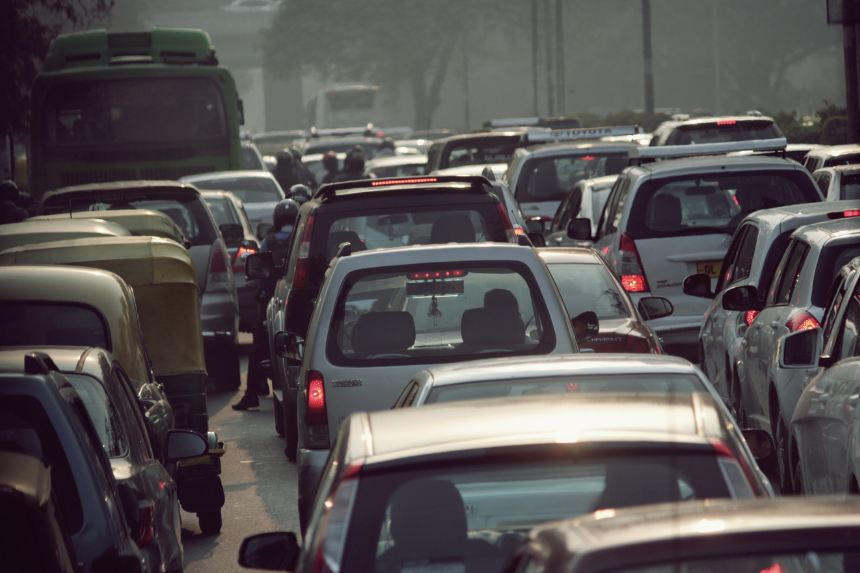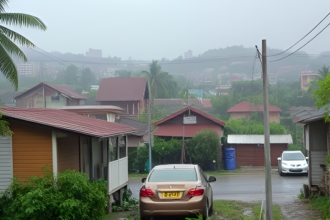India is facing a growing road safety crisis that continues to claim the lives of thousands of people each year. In 2023 alone, more than 172,000 people tragically lost their lives on Indian roads, underscoring the severity of the issue. The causes are multifaceted, ranging from reckless driving to inadequate road infrastructure. As a result, the road safety crisis in India is not just a public health issue but also an economic and social challenge. Addressing this crisis requires immediate action from both the government and the public to prevent further loss of life.
Every day, reports flood the news of fatal accidents involving cars, trucks, buses, and two-wheelers. The picture is grim: over-speeding, driving under the influence of alcohol, and careless driving are all too common. However, the situation is further exacerbated by poorly designed roads, inadequate signage, and a lack of proper safety features in vehicles. The scale of the crisis is enormous, and without prompt action, it will only continue to grow.
What Are the Key Contributing Factors to the Road Safety Crisis in India?
The road safety crisis in India is primarily driven by human factors and inadequate infrastructure. Speeding, drunk driving, and distracted driving are among the top causes of accidents. However, poor road conditions also play a significant role. Many roads are poorly designed and lack basic safety features, such as clear markings, signage, and crash barriers. Additionally, vehicles on the road, particularly older models, often lack essential safety features like seatbelts and airbags, further increasing the risk of fatal accidents.
One of the most concerning aspects of the road safety crisis is the widespread disregard for traffic laws. Many drivers routinely violate traffic rules, either due to a lack of awareness or a general lack of respect for the law. This dangerous behaviour is often exacerbated by the chaotic mix of traffic in urban areas, where pedestrians, cyclists, and vehicles share the same space. Pedestrians, in particular, are at high risk due to poorly planned roads and inadequate crossings. Moreover, overloading of vehicles, especially buses and trucks, increases the likelihood of accidents.
Additionally, the quality of road infrastructure plays a critical role in the road safety crisis. Many roads in India are congested, poorly maintained, or lack adequate safety measures like crash barriers. The presence of multiple types of road users, including non-motorised vehicles such as bicycles, rickshaws, and animal-drawn carts, further complicates traffic dynamics, leading to dangerous situations. The lack of proper road markings, signs, and traffic signals contributes to confusion, especially in high-density areas.
What Steps Can Be Taken to Address the Road Safety Crisis in India?
To tackle the road safety crisis, a comprehensive approach is needed. First, India must implement stricter enforcement of traffic laws. This includes imposing harsher penalties for violations such as speeding, drunk driving, and not wearing helmets or seatbelts. Many accidents could be prevented if traffic laws were followed strictly, and those who violate them were held accountable. Additionally, regular driver education programs can raise awareness about road safety and the importance of following traffic laws. Such programs can also teach defensive driving techniques, which are essential in preventing accidents.
Second, significant investments in road infrastructure are essential. Many of India’s roads are not designed to handle the current traffic volume, and accidents are often caused by poor road conditions. Upgrading roads with proper signage, clear lane markings, and safety barriers can significantly reduce accidents. Special attention must also be given to accident-prone areas, often referred to as “black spots,” where frequent accidents occur due to road design flaws. Identifying these spots and implementing safety measures like rumble strips, better barriers, and proper signage can save countless lives.
Furthermore, the use of technology can play a crucial role in improving road safety. Installing cameras and sensors to monitor traffic can help enforce speed limits, catch traffic violators, and improve overall safety. Smart traffic management systems can help control the flow of vehicles, reducing congestion and lowering the risk of accidents. In addition, India must continue to invest in modern vehicle technologies such as automatic braking systems, airbags, and lane-assist features, which are proven to prevent accidents.
How Can Government Authorities Help Alleviate the Road Safety Crisis?
Government authorities have a critical role in addressing the road safety crisis. One of their main responsibilities is to ensure that road safety standards are strictly followed in the construction and maintenance of roads. This includes regular audits to identify hazards and make necessary repairs to dangerous stretches of road. It’s also important that road projects are regularly monitored to ensure that safety features are implemented correctly and that infrastructure is built to the highest standards.
In addition, law enforcement must be strengthened. Traffic violations such as speeding, driving without a valid license, and not wearing safety gear should be met with more severe consequences. It’s essential that authorities focus on improving the detection and punishment of these violations. In many cases, the lack of effective enforcement leads to a culture of lawlessness, where drivers feel they can break the rules without consequence.
One of the most crucial interventions that the government can make is the establishment of road safety audits. These audits can assess accident-prone locations and recommend measures to reduce accidents. The government should also invest in public awareness campaigns that educate the population about road safety, as changing public attitudes and behaviour is a key component of solving the road safety crisis.
What Are the Long-Term Solutions to the Road Safety Crisis in India?
While short-term measures such as stricter law enforcement and road improvements are important, addressing the road safety crisis in India requires long-term solutions as well. This includes investing in research and technology to better understand traffic patterns and identify high-risk areas. Moreover, integrating new vehicle safety technologies, such as automatic braking systems and lane-departure warnings, can help prevent accidents before they happen.
Urban planning also plays a crucial role. As India’s cities grow, infrastructure must evolve to accommodate not only vehicles but also pedestrians, cyclists, and public transportation. Creating safer, more pedestrian-friendly environments and improving public transport systems can reduce the number of road fatalities and ease traffic congestion. City planning must focus on designing roads that separate different modes of transportation, ensuring that pedestrians and cyclists are not at risk from speeding vehicles.
In the long term, public education about road safety should be an ongoing priority. School programs that teach children about pedestrian safety, cycling safety, and general road rules can help foster a safer generation of road users. In addition, the role of vehicle manufacturers should not be overlooked; they must commit to producing safer vehicles with more advanced safety features.
Conclusion: A Call to Action on the Road Safety Crisis in India
The road safety crisis in India demands urgent attention from both the government and the public. While improvements in infrastructure and stricter enforcement of traffic laws are necessary, long-term solutions such as better urban planning, technological advancements, and cultural change must also be pursued. The government has a crucial role to play, but real change will only occur if citizens also take responsibility for their actions on the road.
India’s road safety crisis is a complex issue, but it is not insurmountable. With coordinated efforts, India can significantly reduce the number of road fatalities and make its roads safer for all users. Addressing this crisis should be a national priority, not only to save lives but also to improve the quality of life for millions of Indians. Only through concerted efforts, both short-term and long-term, can India hope to overcome this grave challenge and make its roads safer for everyone.








